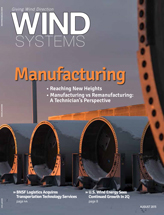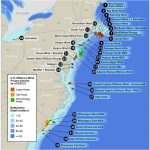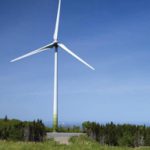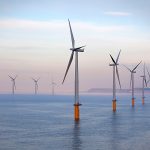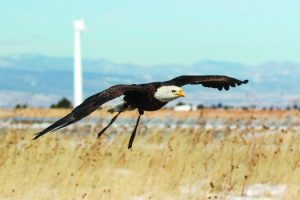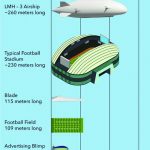With 1,661 MW of newly installed wind turbines coming online during the second quarter of 2015 and more than 13,600 MW under construction, American wind power continues to increase its contribution to the U.S. electric power grid. The approval in May of Florida’s first purchase of wind energy, from a wind project in Oklahoma, added to the growing trend of Southeastern states purchasing wind power, as did the recent announcement of the first utility-scale wind farm to be built in North Carolina.
Building on that momentum, Congress also took a step in the right direction on July 21 when the U.S. Senate Finance Committee voted 23-3 to extend the primary federal tax incentives for growing renewable energy as part of a larger tax policy extension bill.
“With a near-record amount of wind capacity under construction, this looks to be a strong year for American wind power,” said Tom Kiernan, CEO of the American Wind Energy Association. “However, to create longer term stability for the industry the full Senate and the House of Representatives must move quickly to extend the PTC and ITC. Hence the overwhelming bipartisan vote by the Senate Finance Committee … to extend the PTC and ITC is good news for the 73,000 Americans employed by the wind power industry.”
The federal renewable energy Production Tax Credit (PTC), which has the option to be taken as an Investment Tax Credit (ITC) instead, is the primary federal tax incentive for wind energy. This incentive has helped drive more than $100 billion in private investment in the U.S since 2008, and has been instrumental in allowing the industry to lower costs by more than 50 percent in the last five years.
AWEA’s Second Quarter 2015 Market Report released July 22 shows 1,994 MW were installed during the first half of 2015. While that figure more than doubles installations during the same time period last year, it is still well below the pace set in 2012, when the U.S. industry installed more than 2,900 MW in the first half of the year and eventually provided 42 percent of all new U.S. electric generating capacity at year’s end.
Looking forward, more than 100 wind projects are under construction in 24 states, representing more than 13,600 MW of total wind capacity and over $20 billion worth of private investment. The majority of new wind construction activity is in Texas, with Oklahoma, Kansas, Iowa, and North Dakota also benefiting from large amounts of new investment.
“This was the strongest second quarter ever for wind and we continue to see robust activity in the industry. However, uncertainty around federal tax policy clouds the outlook for new growth and could result in the industry being forced off another cliff,” said Hannah Hunt, Research Analyst for AWEA.
There are now 67,870 MW of installed wind capacity in the U.S. and over 49,000 wind turbines online. Texas continues to lead the nation with over 15,000 MW of installed wind capacity, and California now has over 6,000 MW of installed capacity.
NEW TRENDS AS INDUSTRY GROWS
The Florida-based utility Gulf Power and the Arkansas Electric Cooperative Corp. signed power purchase agreements (PPA) for 180 MW and 108 MW of wind in the second quarter, respectively, building on the trend of Southeastern utilities choosing to purchase wind energy.
These announcements are paired with recent news in July that construction will begin on the first commercial-scale wind farm in North Carolina. At 208 MW, the announced project will be far larger than any other in the Southeast, and the first utility-scale project in the region since 2004. Once online, it will bring the total number of states with utility-scale wind projects to 40. Technological advances, primarily the use of taller wind turbine towers and longer blades to reach higher quality wind resources, are opening up all regions of the country to wind project development. The Southeast has long been a center of wind industry manufacturing, and these recent developments bring even more benefits to the region.
In total, utilities signed over 800 MW of new PPAs for wind power in the second quarter of 2015, building on the roughly 12,000 MW of power purchase agreements signed since the beginning of 2013.
Successful U.S. companies and other non-traditional purchasers are also increasingly turning to wind energy as a source of clean, stably-priced energy. Amazon Web Services (AWS) will purchase the output of the recently-announced North Carolina wind project. In announcing the agreement, Jerry Hunter, vice president of infrastructure at Amazon, stated that the company encourages policymakers to “extend the tax incentives” for renewable energy projects:
“This agreement, and those previously in place, puts AWS on track to surpass our goal of 40 percent renewable energy globally by the end of 2016.We’re far from being done. We’ll continue pursuing projects that deliver clean energy to the various energy grids that serve AWS data centers, we’ll continue working with our power providers to increase their renewable energy quotient, and we’ll continue to strongly encourage our partners in government to extend the tax incentives that make it more viable for renewable projects to get off the ground.”
The second quarter also saw the commissioning of two utility-scale wind projects with corporate purchaser investment. Both a 98 MW wind farm in Illinois owned by IKEA and a 211 MW Texas wind farm invested in by Mars, Inc. are now online and will be providing low-cost wind power to satisfy the companies’ high energy demands.
Facebook also made news in the second quarter when it announced its new data center in Texas would purchase the output of a 200 MW wind plant. Tom Furlong, vice president of infrastructure for Facebook had the following comments on the announcement:
“[The data center] will be powered by 100% renewable energy, thanks to the 200 MW of new wind energy we helped bring to the Texas grid as part of this deal. Thanks to our continued focus on efficiency and our investments in renewables in recent years, the carbon impact of one person’s use of Facebook for an entire year is the same as the carbon impact of a medium latte.”
Hewlett Packard also announced this week that it plans to power its Texas data centers with wind power, signing a 112 MW PPA for the energy output from a planned wind farm in the state.
These companies and traditional utilities have explained that they are attracted by wind energy’s unique lack of fuel cost, which builds a more balanced energy portfolio that protects against increases in the price of other fuels.
— Source: AWEA
















